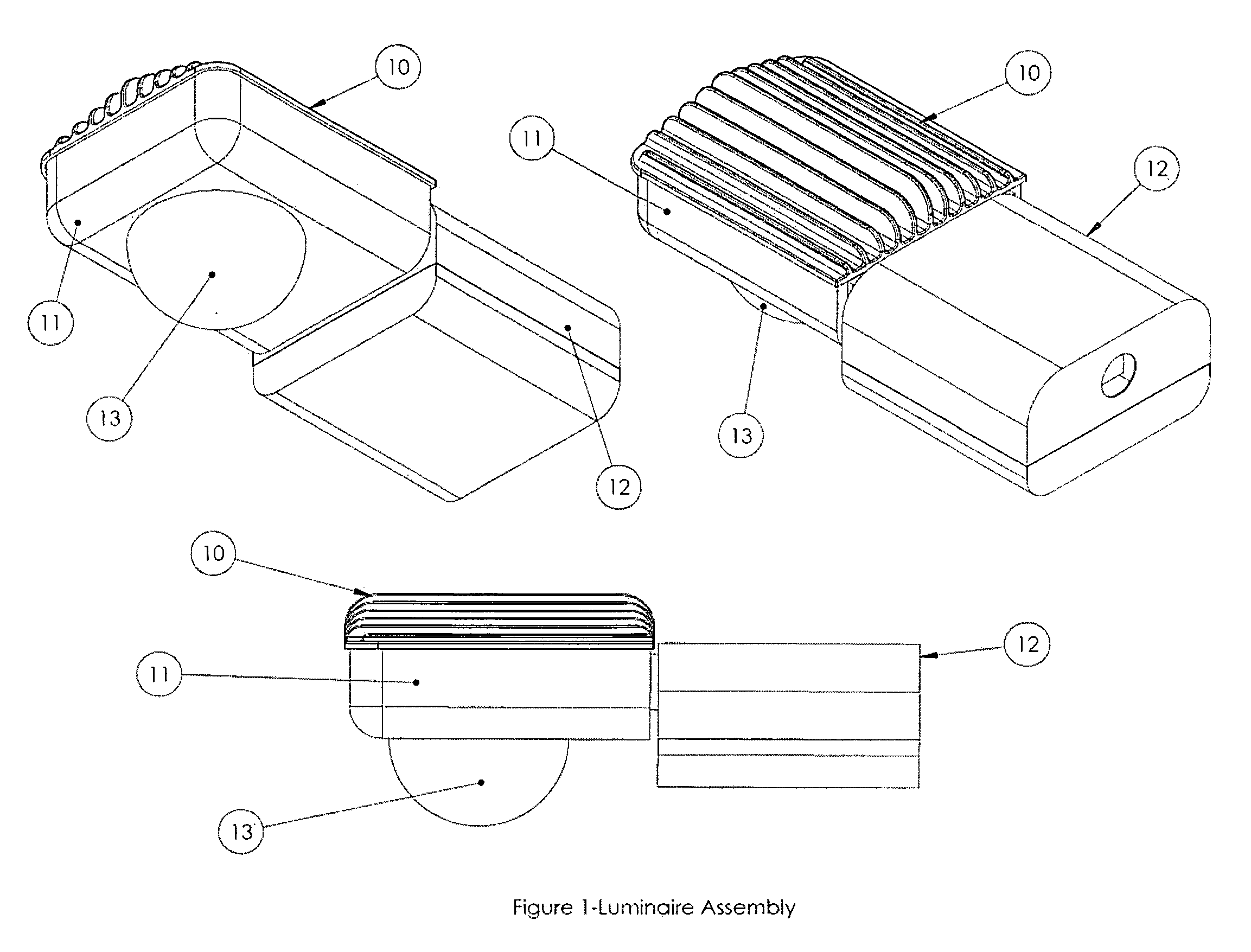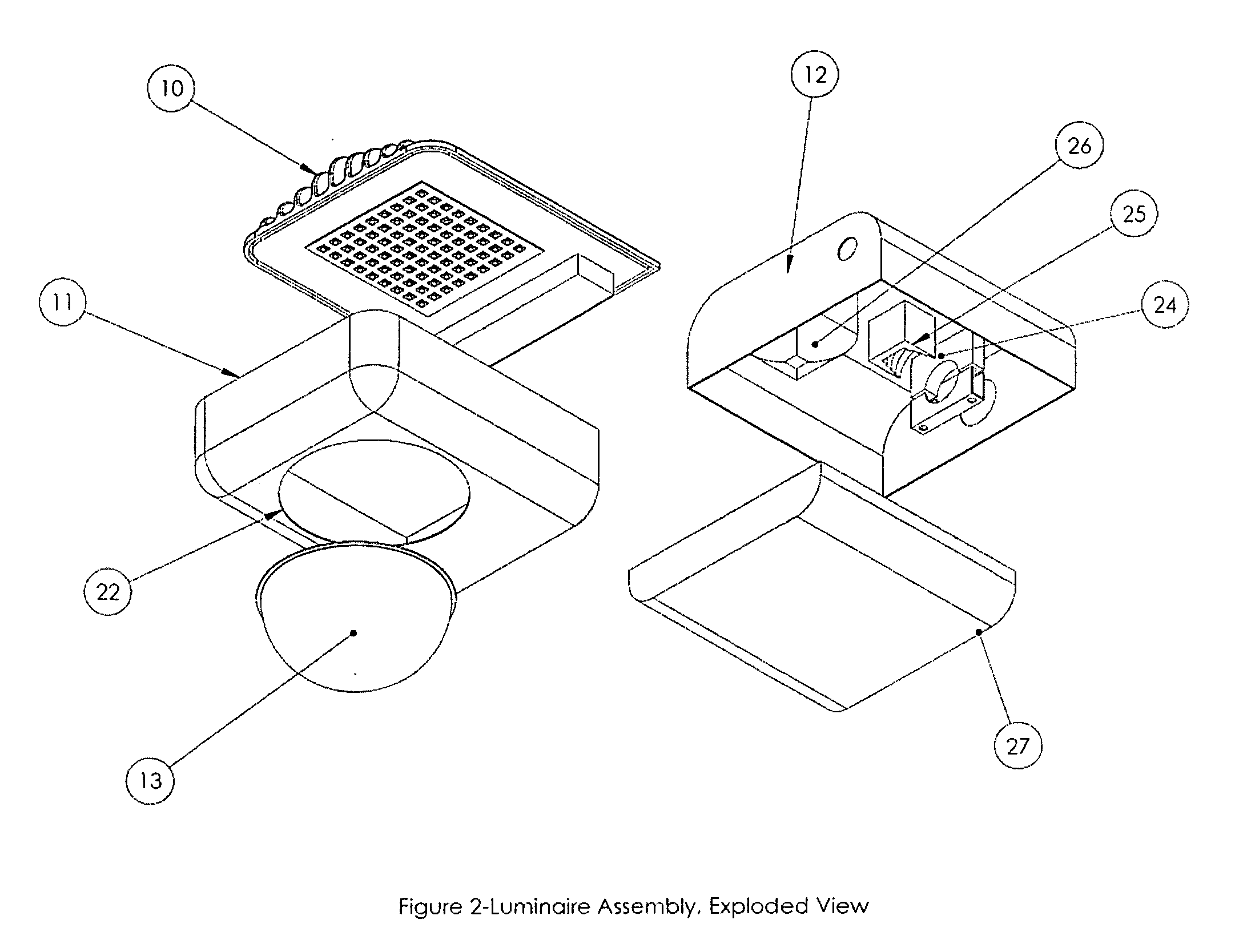Outdoor luminaire using light emitting diodes
a technology of light-emitting diodes and outdoor luminaires, which is applied in outdoor lighting, lighting and heating apparatus, lighting heating/cooling arrangements, etc., can solve the problems of poor color rendition, endanger our environment, and color of light output, and achieve the effect of facilitating heat dissipation
- Summary
- Abstract
- Description
- Claims
- Application Information
AI Technical Summary
Benefits of technology
Problems solved by technology
Method used
Image
Examples
Embodiment Construction
[0028]FIG. 1 is a perspective view of the luminaire assembly. This shows the external components of the luminaire in its assembled form. A rear housing 12 is mounted to a main housing 11 via standard hardware, soldering or welding method, as desired. These housings may be made of any material strong enough to support the weight of the components as well as any local, state, or federal regulations or any other recommendations for such a product. A heat sink 10 is placed on top of the main housing 11 and secondary optics 13 are installed below the heat sink 10.
[0029]FIG. 2 is an exploded view of the luminaire assembly. The luminaire is mounted on a pole or arm through a hole in the rear housing 12. Depending upon the diameter of the pole or arm, it is placed as far into the front arm mount 25 as the steps will allow, providing a secure fit for a pole or arm of greatly varying diameter. The rear arm mount 24 is then clamped over the pole and secured by means of bolts, screws or tool-le...
PUM
 Login to View More
Login to View More Abstract
Description
Claims
Application Information
 Login to View More
Login to View More - R&D
- Intellectual Property
- Life Sciences
- Materials
- Tech Scout
- Unparalleled Data Quality
- Higher Quality Content
- 60% Fewer Hallucinations
Browse by: Latest US Patents, China's latest patents, Technical Efficacy Thesaurus, Application Domain, Technology Topic, Popular Technical Reports.
© 2025 PatSnap. All rights reserved.Legal|Privacy policy|Modern Slavery Act Transparency Statement|Sitemap|About US| Contact US: help@patsnap.com



